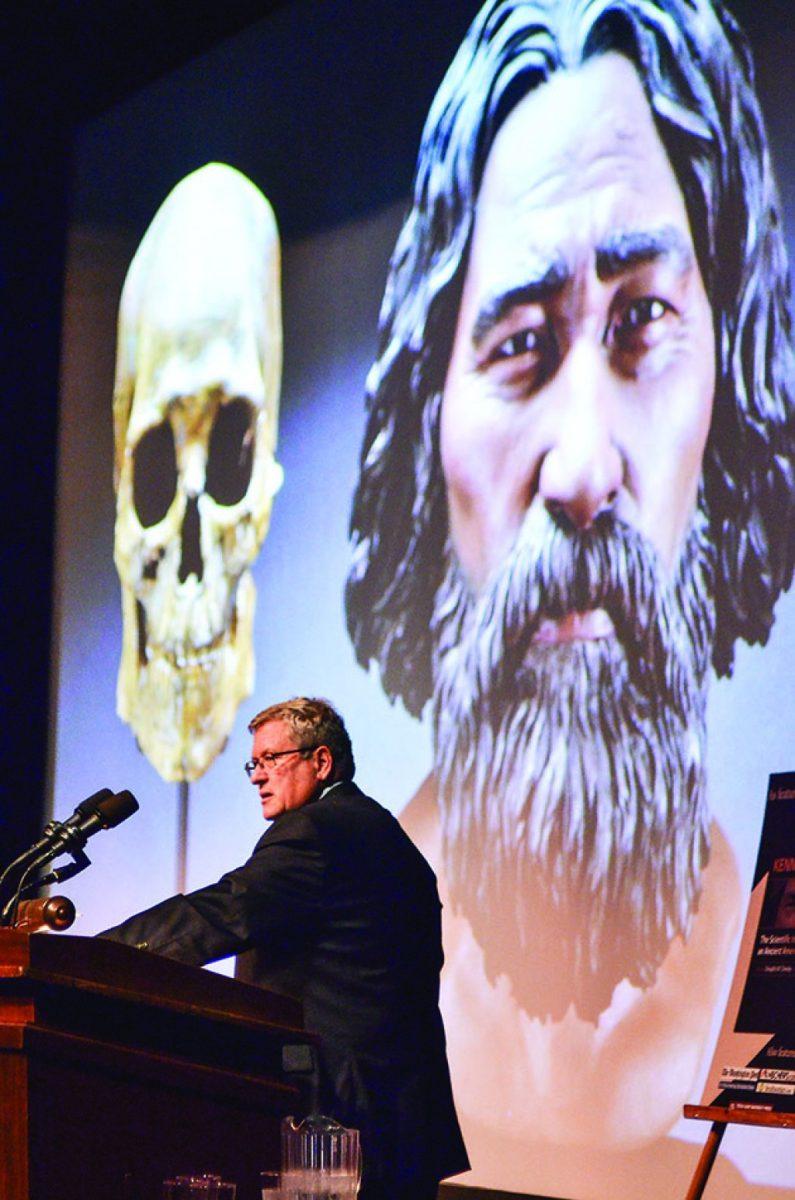Douglas Owsley, physical anthropologist at the Smithsonian Institution, discussed his research on the archaeological discovery of the Kennewick Man on Thursday morning.
Owsley partnered with Texas A&M Press to publish his book “Kennewick Man: The Scientific Investigation of an Ancient American Skeleton,” which chronicles the discovery of the 9,000-year-old skeleton.
As a trained archaeologist and anatomist, Owsley said he works on historic and prehistoric remains with an interested in understanding ancient people in the New World. Both of these, he said, led him to the Kennewick Man skeleton investigation.
“The Kennewick Man skeleton is a major discovery,” Owsley said. “It’s really, from my stance, America’s most important skeleton that’s been found today. It’s very complete and it can just tell us a great deal about what life was like 9,000 years ago.”
The Kennewick man skeleton, which stands 5 feet, 7.5 inches, was found in 1996 on the Columbia River near Kennewick, Washington, Owsley said. However, it took eight years of court and negotiations with the U.S. Corp of Engineers and Native American tribes for Owsley and his team to gain the right to research the skeleton, Owsley said.
Owsley said he wanted to go to the Texas A&M press because the university has a great center for the study of the first American and current faculty members were involved in his investigation.
“With the University Press, there is no finer publication that could have come from this study than the service that they gave for us; their attention to detail, their design, everything about that,” Owsley said. “I’m working on another book on Chesapeake studies Jamestown and I will come back to them.”
Owsley said the main message with this discovery is that researchers are just beginning to understand what life was like for people in the New World. Owsley said discovery will continue to grow as students research and settle on questions we haven’t even thought of today.
“The students that they have here, they’re going to settle a lot of these things, that we are going to just raise questions about today, in their lifetime with the types of techniques that they use, the different types of questions they are going to ask in the future we aren’t even thinking about today,” Owsley said. “So it’s an evolving developing field.”
Looking forward, Owsley said it is important that students are trained how to study and choose the right tool in order to explain archaeological discoveries.
“The Kennewick Man is about securing the right to answer and ask questions from the past,” Owsley said.
Researcher shares insight on Kennewick Man
October 16, 2014
0
Donate to The Battalion
$2740
$5000
Contributed
Our Goal
Your donation will support the student journalists of Texas A&M University - College Station. Your contribution will allow us to purchase equipment and cover our annual website hosting costs, in addition to paying freelance staffers for their work, travel costs for coverage and more!
More to Discover










